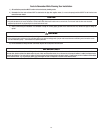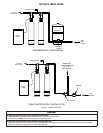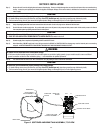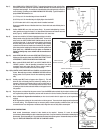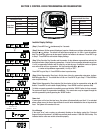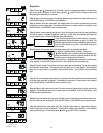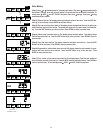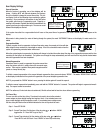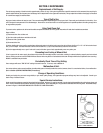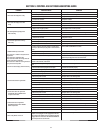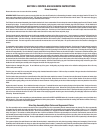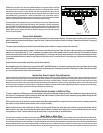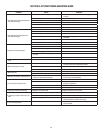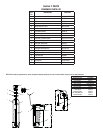
SECTION 4: MAINTENANCE
Replenishment of Salt Supply:
The salt storage capacity of the brine tank is approximately 135 lbs. (61 kg). During each regeneration a specifi c amount of salt is consumed, thus requiring its
periodic replenishment (the frequency and salt dosage level is dependent on the regeneration schedule). Always replenish salt before the supply is exhausted
for a continuous supply of softened water.
Type of Salt to Use:
Any type of water softener salt may be used. There are advantages and disadvantages to every type of salt. Please ask your local dealer for his advice. Your
unit is designed to compensate for the disadvantages. However the use of block salt is not encouraged due to its possible problems in making enough brine
for regeneration purposes.
Brine Tank Clean-Out:
To prevent service problems the brine tank should be emptied and fl ushed out with a garden hose when dirt and other insolubles accumulate.
Steps to follow:
(1) Disconnect brine line at either end.
(2) Turn brine tank upside down and discard old salt.
(3) Rinse out with a garden hose.
(4) Reconnect brine line.
(5) Before loading salt, using a pail or garden hose, add enough water to the brine tank to cover the salt grid lower shelf on 15” x 15” x 34” brine tank at least
one (1) inch in depth. Then add initial salt to brine tank and add one (1) cup of unscented laundry bleach to the brine well.
(6) Perform approximately once a year if rock salt is used; with other types of salt, approximately once every other year.
Preventing Iron-Fouling of Mineral Bed:
If iron is present in the water supply, the softener mineral bed will eventually become iron-fouled, resulting in reduced softening capacity and rust-stained
fi xtures. Mixing one to two ounces of IRON-X Mineral Cleaner with every 80 lbs. of salt added to brine tank will help minimize these problems from occurring.
IRON-X is available from your dealer.
Periodically Check Time of Day Setting:
Power outages will cause “TIME OF DAY” setting to become incorrect. To correct, refer to Section 4.
Malfunction of Unit:
Your water softener, under normal conditions, should provide years of virtually trouble-free service; however, since it is a mechanical device, it can malfunction.
(Refer to Section 5, SERVICE INSTRUCTIONS, if necessary).
Change of Operating Conditions:
Should your family size, your water usage habits, or your water quality change, the regeneration program settings may have to be adjusted. Consult your
dealer if any of the above occur.
Special Service Instructions:
Under normal circumstances removal of valve should not be required. However, if it must be removed, it can be done by disassembling the quick release clamp, and
latch. Pressure should be relieved before attempting any disassembly. Upon reassembly, all o-rings should be lubricated with silicone grease. Reassemble clamp
as shown in Figure 5. MAKE SURE ARROWS ON LATCH SIDE OF CLAMP ARE ALIGNED.
Figure 6. CLAMP ASSEMBLY
4-1



